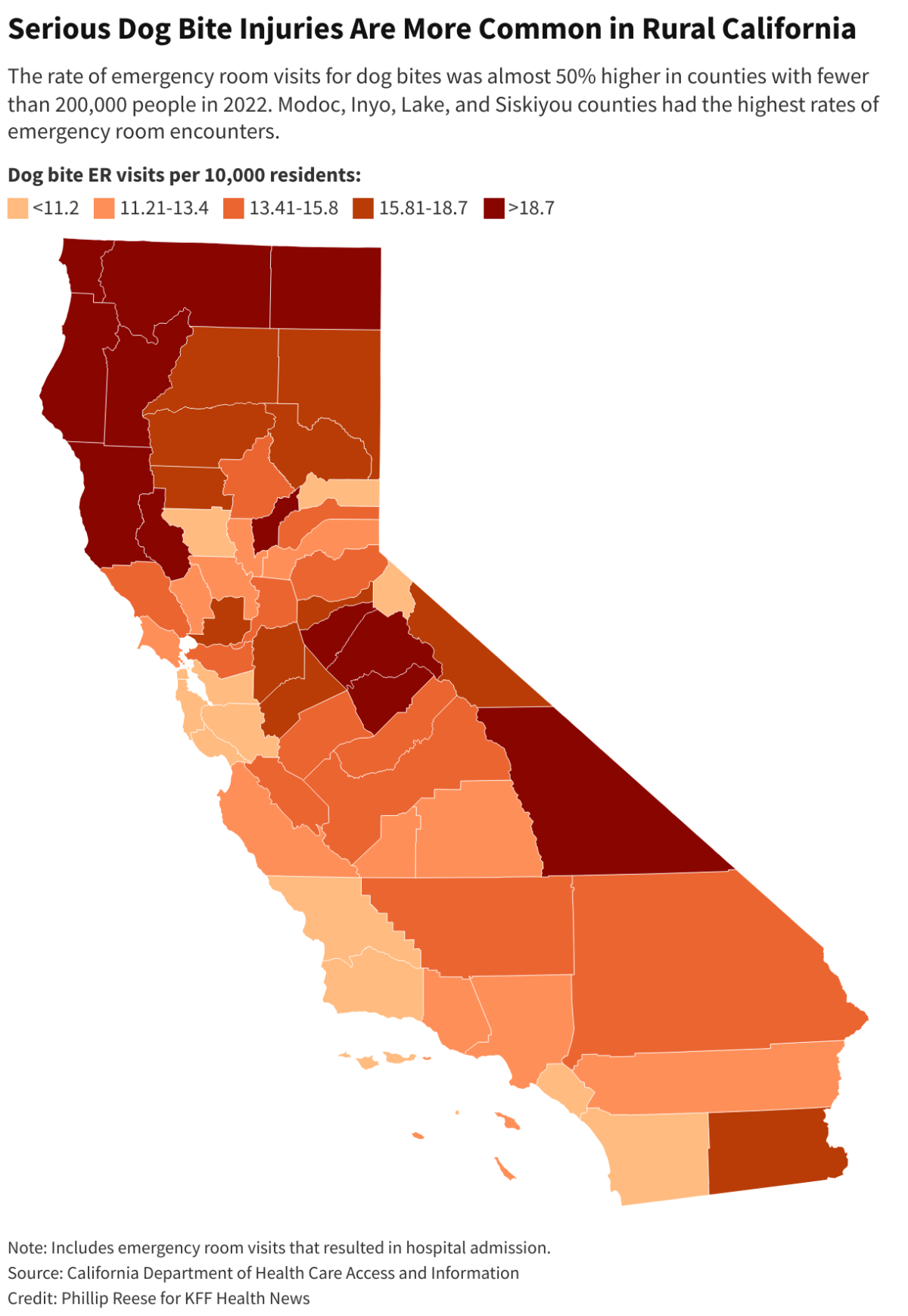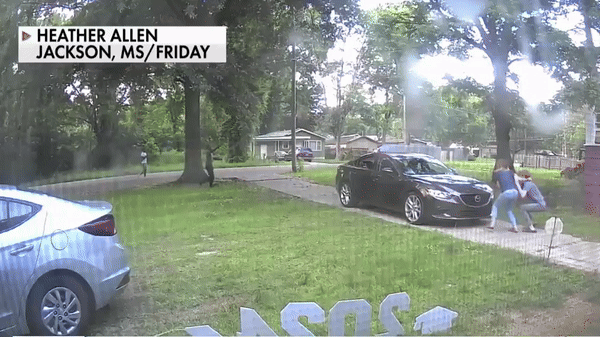Those pandemic puppies are becoming a public health problem.
The latest data from California shows an increase in rates of emergency room visits, hospitalizations and deaths from dog bites, with new records set after COVID-19 closures.
In 2022, there were 48,596 emergency visits for dog bites in California, or 125 visits per 100,000 residents, a 70% increase in the visit rate since 2005, according to the state Department of Health Care Access and Information.
The rate of hospitalizations roughly doubled between 2006 and 2022. And while deaths from dog bites are extremely rare, the death rate in California increased by about 70% over roughly the same period, with 28 deaths in the state between 2018 and 2022. Bites were the underlying cause of 96 deaths in 2022, while the death rate more than doubled between 2005 and 2022, according to data from the US Centers for Disease Control and Prevention.
Even before the pandemic, more and more Americans welcomed dogs into their homes. The American Veterinary Medical Association. estimates that households nationwide owned about 86 million dogs in 2020, up from about 62 million in 2001. The pandemic accelerated that trend as millions more people adopted puppies to provide companionship during a period of isolation.
But the lockdowns prevented the puppies from socializing, said Dr. Elizabeth Stelow, chief of the Behavioral Service at the UC Davis University Hospital of Veterinary Medicine. For healthy development, she said, puppies need to learn acceptable behavior between the first three and 16 weeks of life.
“You're supposed to socialize that puppy with new types of people, new types of animals, new types of places, new types of everything,” Stelow said. “No one could do that. So we're seeing the effects of that all the time right now.”
As poorly socialized puppies grow into adults, their bites can cause more damage. From 2021 to 2022, the number of emergency room visits in California for dog bites grew 12%, marking the highest annual total to date. Although a recent study did not show a nationwide increase in the rate of emergency room visits for dog bites between 2005 and 2018, several national studies did show an increase in the proportion of emergency room visits for dog bites during the pandemic.
Another possible explanation is the popularity of breeds that some people consider aggressive. Kenneth Phillips, one of the nation's leading attorneys specializing in dog bite litigation, placed much of the blame on pit bulls, which have become one of the most popular breeds in the United States. “All the studies always come to the same conclusions, which is that this is the dog that does the most damage,” he said.
Some studies show that pitbull bites are often associated with serious injuries, while other studies claim that they are not a disproportionate threat. Stelow said a socialized and trained pit bull is no more dangerous than dogs of other breeds. “Why is the number one dog demographic for dog bites the pitbull? Because they represent a huge percentage of California’s dog population,” she said.
Phillips said animal shelters are increasingly pressured to euthanize fewer dogs, meaning people end up adopting more aggressive dogs without knowing it. According to Best Friends Animal Society, the number of “no-kill” animal shelters has increased significantly in recent years. However, even no-kill shelters may euthanize aggressive dogs that cannot be safely adopted out. A 2019 California law requires animal shelters and rescue groups to disclose a dog's bite history to anyone who adopts it.
A few years ago, a German shepherd was sitting next to a garage in Sacramento as mailman Jacob Studer pulled up to the driveway to make a delivery. The dog snuck up on Studer as his owner called out to him. Studer said the dog attacked when he began to pick up his mail bag.
“The dog jumped up, grabbed my arm, bit me and then practically tore my sleeve and knocked me to the ground,” he said. “I fell backwards and almost did a little somersault.”
Studer was not seriously injured and did not go to the hospital. However, he said the dog's owner decided not to keep him.
State figures and a recent study by public health researchers show that in California, children and young adults are the age groups most likely to visit the emergency room for dog bites. Nationally, children under age 5 were more than twice as likely to die from dog bites as members of other age groups, according to CDC data from 2018 to 2022.
Dr. Randall T. Loder, professor emeritus of orthopedic surgery at Indiana University School of Medicine, said the most serious injuries from dog bites often affect the head and neck, causing children children are especially vulnerable.
“Younger people don't understand the risks of a dog,” said Loder, author of a recent study on tens of thousands of dog bite injuries. “They are vulnerable.”
Their study estimated that the annual healthcare cost of treating dog bites is at least $400 million nationwide. Dog bites can cause infections or transmit serious diseases such as rabies.

In California, serious dog bite injuries are more common in rural areas. The rate of emergency room visits for dog bites in 2022 was almost 50% higher in counties with fewer than 200,000 residents. Modoc, Inyo, Lake and Siskiyou counties had the highest rates of emergency room encounters.
Stelow said dogs in rural areas are often not as socialized as their urban cousins. Rural residents also tend to have more dogs.
Stelow said owners of aggressive dogs should see a veterinarian as soon as possible, especially one who specializes in animal behavior. She said owners should learn to recognize anxiety in dogs and understand their body language. For example, dogs that are scared may try to run away, fight, fidget and fret, or freeze.
“For dogs that are already in that situation where they bite people,” Stelow said, “they need to see someone who can work through the emotional damage that has been caused and try to correct it.”
Phillip Reese is a data reporting specialist and associate professor of journalism at Cal State Sacrament.
This article was produced by KFF Health Newswho publishes California Healthlinean editorially independent service California Health Care Foundation.












